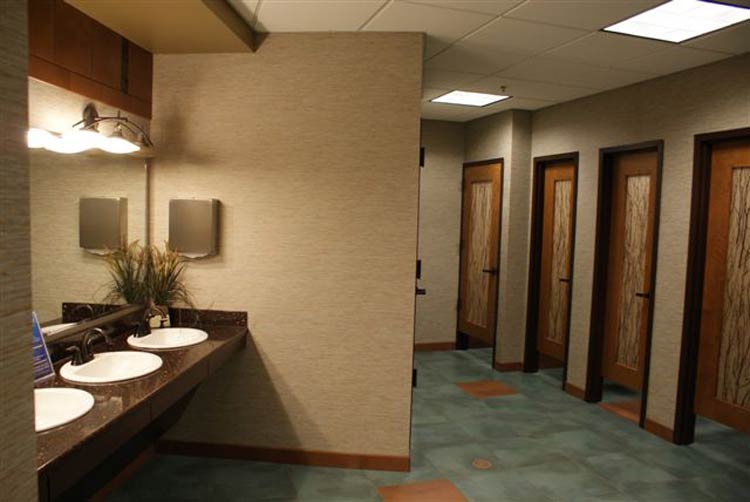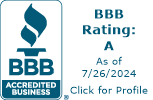Restrooms are typically the most used facility in any building. Everyone from the CEO of a company to a visiting guest will use a building’s restroom at some point, and the experience that people have in this space influences their overall impression of the building and the business itself. By creating a clean and well managed restroom environment, building managers can help improve users’ experiences and make a lasting impression.
The condition of restrooms should be a top priority for facility managers and cleaning service providers. Of all building spaces, the quality of these facilities typically generate the most complaints – particularly if they are unclean or inadequately stocked – and can even lead to departures from tenants who expect a comfortable restroom experience. Restrooms reflect on the entire business and every impression counts.
Facility maintenance staff typically completes tasks such as restocking bath tissue, replenishing soap dispensers and managing supply orders through manual checks – stall by stall and floor by floor. However, the growing trend of leveraging the connectivity of technology, which includes the use of sensors embedded in objects to collect and exchange data around the clock, enables facility managers to reduce common restroom problems and improve the way they handle restroom maintenance.
High-quality service is intricately linked to resolving issues immediately after – if not before – they arise. That’s why smart restroom solutions, which employ web-enabled sensors embedded in hand towel, bath tissue and soap dispensers to wirelessly transmit refill needs to a web application, can be invaluable. By capturing this data and displaying it on an online dashboard, intelligent restroom systems can help facility managers handle everyday responsibilities, reduce the amount of laborious tasks, and better allocate their staff’s efforts on critical cleaning tasks.
How can building managers utilize this technology to enhance their cleaning staff’s effectiveness without creating extra work for themselves or their teams? Here are six advantages to incorporating smart technology into a facility’s business model:
– (Eliminating issues before they arise) Intelligent restroom systems can help facility managers become better informed of restroom traffic and alert them exactly when and where issues arise. Because facility staff maintains responsibility for a wide array of tasks, many of which take priority over resolving customer complaints regarding product refill needs, it is imperative to eliminate the latter before they arise. After all, building managers take great care in creating premium restroom experiences and don’t want complaints over an empty toilet paper dispenser to taint that impression.
– (Better staff utilization) Smart dispensers that generate actionable data can help managers in their staffing decisions. Insights that managers derive from this information can shift cleaning staff from a schedule-based cleaning approach to a need-based method. Even when unexpected cleaning needs arise, managers clean quickly deploy tasks to the cleaning staff. Once cleaning staff receives and addresses the tasks, they can mark the tasks “complete” so managers are aware. With this information in hand, facility managers can better manage staff and anticipate needs.
– (Efficient supply ordering) Data that building managers capture from smart restroom helps them gain a better idea of product consumption patterns that ultimately dictate the bulk and rate at which they must place new orders. Because facilities often have limited storage space, awareness of the product usage rates help staff avoid ordering more product than their storage areas can accommodate.
– (Opportunity to impress) Fully stocked and consistently clean restrooms can make a great impression on building tenants and guests. When tenants and visitors have seamless experiences in a building, it can generate positive word of mouth for that venue, improving overall reputation as well as increasing tenant referrals. When tenants experience consistently high standards in the restroom, it creates a comfortable environment that can ensure guests feel valued. Not only can technology improve the efficiency of maintaining building washrooms, it can also wow first-time visitors and longtime tenants alike.
– (Discovering traffic patterns) Technology in intelligent restrooms can help staff uncover trends within the facility, such as identifying individual restrooms with the most traffic. By correlating these patterns to specific offices, regularly scheduled events and popular break times, building managers can anticipate and dictate which areas of the building need the most attention to meet occupants’ needs.
– (Letting technology do the heavy lifting) Facility maintenance staff often manages the upkeep of entire buildings, so having access to accurate data on restroom stock and supply needs to hand can greatly ease the demands on their time. Emerging technology can serve as the backbone to improving building performance, benefiting washroom users and building management alike. By understanding this and identifying areas where smart technology can improve processes and reputation, building managers and maintenance staff can work smarter, not harder.
There are numerous ways in which connectivity technology can benefit facility managers and staff. By understanding the advantages of smart technology and identifying areas where real-time data can improve processes, building managers can ensure every guest has a clean, fully stocked and comfortable restroom experience every time.
Article Credit: Cleaning & Maintenance Management Magazine (Jimmy Baynum)

